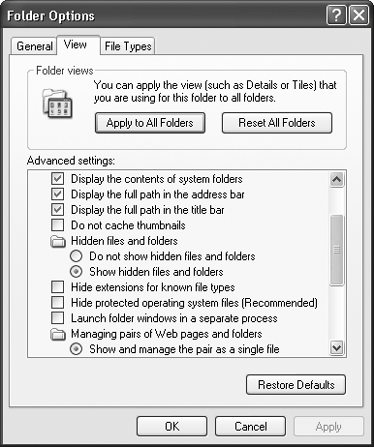TROJANS, WORMS, AND VIRUSES
WHAT TO DO ABOUT TROJANSThe Annoyance:My PC has started acting strangelyno matter what I do, my Internet speed slows to a crawl. I've also noticed that my PC dials out to the Internet by itself. And just a few minutes ago, the CD tray opened by itself! Has my PC been possessed by ghosts? The Fix:Those are classic signs of a Trojan infection. The biggest problem with Trojans, though, isn't what you see, but what you don't see. Trojans allow other people to silently take control of your computer and all of its resources. For example, they can read, change, or delete your existing files, and even add new files to your computer. They can also use your computer as a launching pad for attacks against others, so it will look as though you're the attacker. Trojans typically work by "phoning home"that is, they connect to the Internet from your PC. Firewalls such as ZoneAlarm (http://www.zonealarm.com) provide the best protection against Trojans because they can block these outbound connections. In addition to using a firewall, make sure you scan your system regularly with up-to-date anti-virus software.
HIDDEN FILE EXTENSIONS FEED VIRUSES AND WORMSThe Annoyance:I opened an email attachment from a friend, which turned out to be a worm that promptly chomped its way through my computer. It appeared to be a graphics file, but I later found out that it was actually an executable program. If I had known the attachment ended in .exe, I never would have opened it. How can I make Outlook show me file extensions? The Fix:By default, Windows XP doesn't display common filename extensions, such as .exe, .doc, .xls, and many others. Virus writers use this knowledge to trick people into opening dangerous files. For example, they may write a virus and give it a filename like familypic.jpg.exe. If you received an email with that file attached, you would see the filename as familypic.jpg, because Windows hides the .exe by default. When you click the file, you launch the virus. To force Windows XP into displaying all filename extensions, open Windows Explorer, select Tools Figure 9-10. Change your View options to make sure you see the file extension of any file sent to you via email. HOME-GROWN EMAIL WORM AND TROJAN DETECTORThe Annoyance:My friend sent me an email worm. Fortunately, my anti-virus detector killed it, but what if a different worm gets through? How can I tell if a worm has hijacked my PC and is sending evil twins of itself to everyone I know? The Fix:Add a bogus email address to your address book. For example, create an address like noone@@worm.com. That way, if a worm or Trojan infects your PC and sends copies of itself to everyone in your address book, you'll get a bounceback message alerting you that your email to noone@@worm.com can't be delivered. Since you didn't try to send that email, you'll know that a worm or Trojan has infected your PC. HELP! I'VE BECOME AN AIM SPAMMER!The Annoyance:A friend on my Buddy List sent me an IM via AOL Instant Messenger asking me to click on the following link: http://www.buddylinks.net. The site asked if I wanted to download a game. I figured if my friend suggested it, the game must be a good one. Bad move! Now I'm getting tons of irritating pop-up ads, and AIM is sending messages to my friends with a link to the same site. Help me get my good name back! The Fix:When you downloaded the "game," you installed adware, which is generating the pop-up ads and spamming everyone on your Buddy List. To remove the adware, select Start
Next, install some anti-spyware software, such as Ad-Aware (available from http://www.lavasoftusa.com), on your PC. Perform a scan and remove any remaining traces of the program.
INSTANT MESSAGING LINKS HIJACKED MY PCThe Annoyance:I clicked a URL someone sent me via an instant messaging program, and it hijacked my PCI keep getting random pop-ups, a strange toolbar has appeared in IE, and my PC has slowed to a crawl. How can I send and receive IMs, and still protect myself? The Fix:Malware writers are increasingly targeting instant messaging programs as a way to spread viruses, worms, and Trojans. Most likely, a worm or Trojan hijacked your buddy's IM program and sent the message to you. When you clicked the URL, your PC was infected with spyware. To prevent spyware, viruses, worms, or Trojans from infecting your PC, follow this advice whenever you use your IM program:
|
EAN: 2147483647
Pages: 89
 Folder Options, and click the View tab. Uncheck the "Hide extensions for known file types box and click OK (see Figure 9-10). From now on, when you get an attachment in your email program, you'll see the entire file extension.
Folder Options, and click the View tab. Uncheck the "Hide extensions for known file types box and click OK (see Figure 9-10). From now on, when you get an attachment in your email program, you'll see the entire file extension. Control Panel
Control Panel